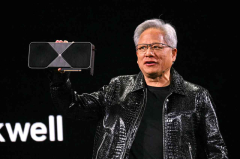College students in class in an amphitheatre. (Photo by Michel BARET/Gamma-Rapho via Getty Images)
If we examine the world’s most successful tech companies closely, an interesting pattern emerges: most began in academic settings. Google was conceived at Stanford University, where Larry Page and Sergey Brin developed their search engine as part of a PhD project. Facebook was launched in a Harvard dorm room by Mark Zuckerberg to connect classmates before it expanded to transform social media. Many other innovations—VMware, NVIDIA—can trace their origins to university labs, lecture halls, or student dormitories.
What I specialize in today is no exception. The decentralized AI platform OORT, which my team and I are building, also has its academic foundation. It began during a course I taught at Columbia University in 2018 called “Reinforcement Learning in AI.” That course became the starting point for a significant idea that was ahead of its time and is now gaining widespread attention.
The Classroom Challenge
The course’s final project required students to train AI agents. For non-technical readers, this process involves teaching an AI model to learn and make data-based decisions. It is similar to providing structured training to a digital system by feeding it information, guiding its responses, and improving its performance through iterative feedback.
However, training AI agents requires significant resource requirements. It demands substantial computing power and large amounts of storage to handle and process data. Traditional cloud services, such as those offered by Amazon and Google, charge high fees for these resources, making them inaccessible to most student budgets.
This limitation became apparent as many postgraduate students faced difficulties completing their projects. While they demonstrated creativity and technical capability, the required infrastructure was out of reach. This raised a key question: Could there be a way to bypass expensive, centralized cloud services and develop a more accessible and cost-effective solution?
Prototype for Decentralized Solutions
We started exploring how blockchain could serve as an incentive layer for creating a decentralized cloud solution for AI development, allowing students to complete their final projects realistically.
Here’s what we did:
- Utilizing Idle Resources Globally: The platform uses underutilized resources worldwide, such as spare hard drives in offices and unused bandwidth on personal computers.
- Built on Blockchain: Blockchain technology enables a transparent and secure network for integrating these distributed resources.
- Adopting Crypto Payment: The platform adopted crypto for instant worldwide small transactions. This is because the current financial system does not support instant worldwide small transactions.
In simple terms, think of this as the Airbnb of infrastructure. Just as Airbnb allows homeowners to rent out unused rooms, the platform developed for students enables individuals to contribute their spare storage or computing power to a shared cloud, significantly reducing costs.
This decentralized experiment, created for Columbia students in 2018, proved to be a prototype for today’s concepts of Decentralized AI (DeAI) and Decentralized Physical Infrastructure Networks (DePIN). In essence, DePIN is the backbone that enables DeAI systems to function effectively, while DeAI represents the application layer that uses the decentralized infrastructure. At its core, DePIN focuses on the physical layer—the infrastructure that powers decentr





